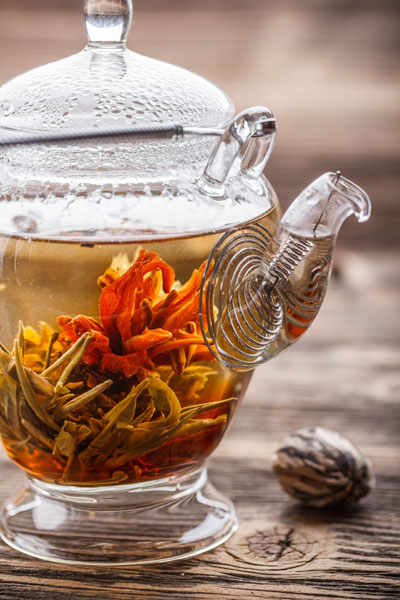After reading our article on MENTAL AWARENESS - THE THEANINE LINK IN TEA and how the caffeine in tea is amazingly blunted by theanine, perhaps you are someone who still wants to, or even needs to, decrease your caffeine consumption. If you are pregnant, breastfeeding, are making tea for children, or just happen to have sensitivity to caffeine, then DECAFFEINATED TEA may be the way to go for you.
 It is important to note that during the process of decaffeination, the health benefits are decreased as well. The USDA found that decaffeinated green tea contains less than a third of the healthful catechins in regular tea, which are the antioxidants in the tea that give you all the amazing health benefits. A 2003 UCLA study also came to this same conclusion.
It is important to note that during the process of decaffeination, the health benefits are decreased as well. The USDA found that decaffeinated green tea contains less than a third of the healthful catechins in regular tea, which are the antioxidants in the tea that give you all the amazing health benefits. A 2003 UCLA study also came to this same conclusion.
There are two ways teas are decaffeinated before being put on the market.
Naturally Decaffeinated is one method.
It sounds so, well, natural, doesn’t it? This process actually uses a chemical solvent called ethyl acetate. After soaking the tea leaves in water to release caffeine and other tea compounds, the leaves are removed and then the water is brought in contact with the ethyl acetate to absorb the caffeine. The leaves are then returned to the water again to reabsorb the nutrients. Traces of the chemical are still in the water, and this chemical has been linked to liver, respiratory, and nervous system health problems. So the next time you read “naturally decaffeinated”, remember, there is nothing natural about it at all. The way they get around it is that ethyl happens to be found naturally on tea leaves. But this is a chemical process.
Carbon Dioxide Decaffeination is the other method.
This preferred method uses a carbon dioxide solution to soak, and then carbon or charcoal to extract the caffeine. This process preserves more health properties of the tea and does not leave any unwanted chemical residue. This is the kind of decaffeinated teas we provide.
Another alternative to decaffeinated teas is herbal teas as they do not contain caffeine. RED TEA such as Rooibos and Honeybush, which we provide in our tea shop, are also caffeine free. HERBAL TEAS are also 100% caffeine free.
DECAFFEINATE YOUR TEA AT HOME – THE HOT WASH METHOD:
You can actually enjoy your favorite kind of tea, instead of trying to hunt high and low for a decaf equivalent, by decaffeinating it yourself at home. This is an easy method to decrease the caffeine content of your tea. Although the taste may be a bit diluted, with high quality loose teas, it should not be too noticeable and provides a healthier alternative for those looking to decrease their caffeine intake.
This process also helps preserve the vast majority of catechins, since caffeine dissolves quickly in water and the other nutrients in tea do not.
Here is the breakdown of the method – you basically throw away the first infusion, and the longer you let the infusion soak, the more caffeine will be “soaked up” into the water to be discarded. It is actually quite common in China to throw away the first infusion of tea.
How long should you let your brew soak? It depends on how much caffeine you want removed. Research has found that a 3 minute soak will remove nearly half of the caffeine, and a 10 minute soak over 90%. 5 minutes will remove about 70% which is a good time, in order to retain a good flavor and still decrease the caffeine content. If you want to remove 100% of the caffeine, a 15 minute soak will do the job. Remember, you then discard those infusions and brew again with the leaves and then you will consume that decaffeinated brew.
This is the easiest and healthiest way to enjoy tea with less caffeine!
